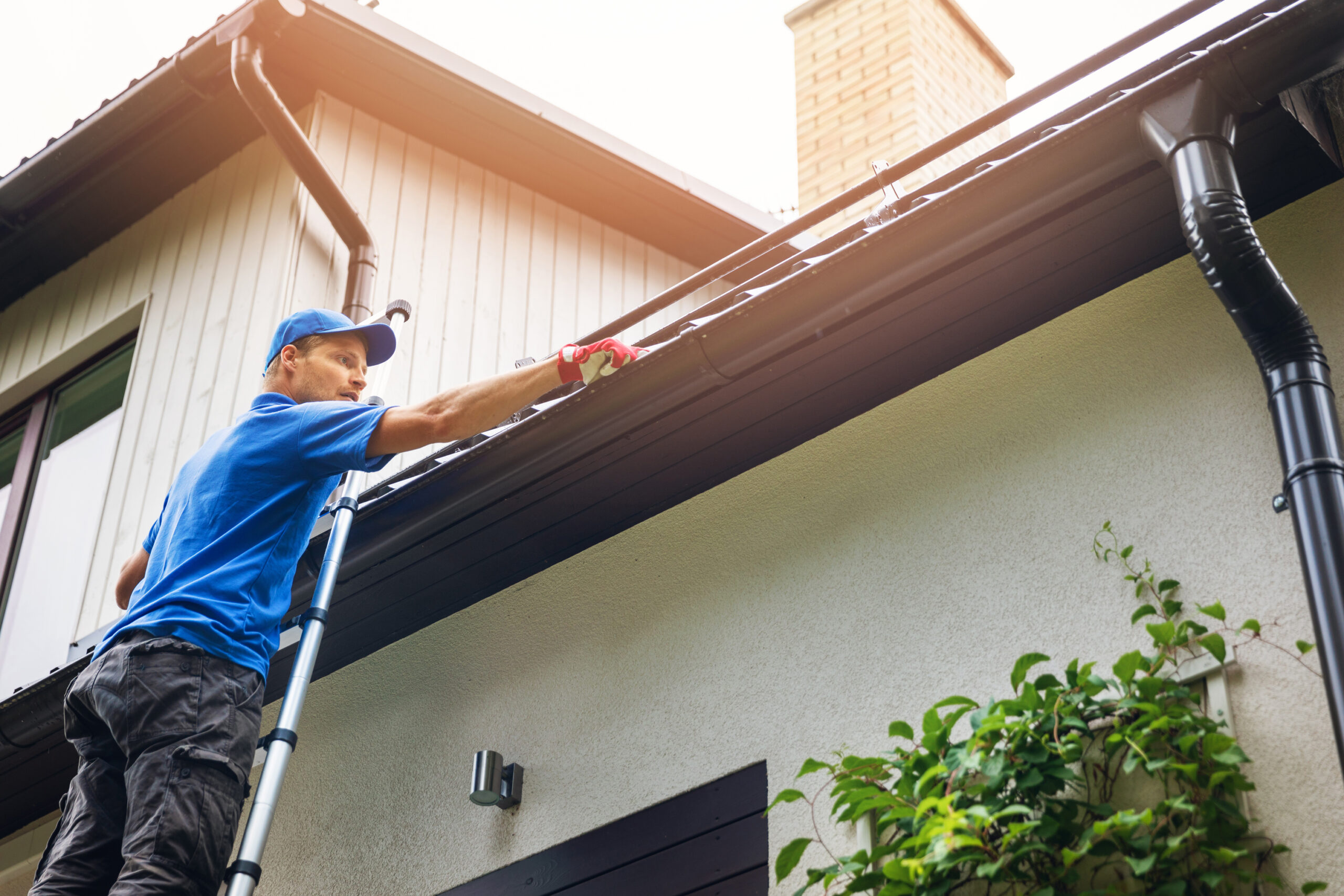
Brought to you by HBA Gold Industry Partner, Arrow Termite and Pest Control/ Arrow Exterior Home Services
Gutters— the unsung heroes of the southern home. These exterior fixtures provide protection by directing away excess water flow from rain. As Louisianians, we are no strangers to extreme weather. As we approach spring showers, it’s critical that your gutters can handle whatever the weather throws at them.
Why Gutters
No matter your location, gutters are essential to preserving the life of your home. They save homeowners thousands by preventing rainwater from damaging foundations. In addition to foundation costs, gutters protect landscaping by dispelling soil erosion. They even stave off mold growth caused by resting water.
Signs You Need New Gutters
If you own a home in the south, odds are you already have a gutter system. However, how do you know when it’s time for replacement? Check your current gutters for major leaks, cracks, or dents. Additionally, if your gutters are bent or pulling from your home, it’s probably time for an upgrade.
Choosing Exterior Gutters
Gutters come in a variety of materials, styles, and designs. There is no “best” choice per se for homeowners. However, there are gutter types that are better suited for your specific home, price range and climate. We’ll start by looking at the different gutter materials and their unique advantages and disadvantages.
Material Options
Aluminum
Due to their dependability and low cost, aluminum is a common choice for homeowners. Aluminum gutters are lightweight and rust resistant. Their weight makes for easier installation but opens them up to debris, heat, and wind damage. With proper maintenance, aluminum gutters can last up to twenty years.
Vinyl
Vinyl gutters made from polyvinyl chloride (or PVC) are more cost-effective. However, the plastic material poses unique disadvantages. While they are the most affordable option, they tend to be less effective at handling large amounts of rainwater. Vinyl gutters are also more susceptible to weather damage, with lifespans of up to fifteen years.
Galvanized and Stainless Steel
Galvanized steel gutters are zinc-coated, protecting them from rust and corrosion. They are made of heavier material than aluminum gutters, making them stronger but more difficult to install. Their strength also grants more protection from heavy downpours typical in southern climates. Galvanized steel gutters have a lifespan of up to twenty years.
Stainless Steel gutters consist of a higher percentage of chromium, an alloy that provides corrosion and rust defense. Stainless steel is another heavy material benefiting from professional installation. It’s a sturdy material with a lifespan of up to twenty-five years.
Copper
Copper is an unconventional but luxurious material with a unique appearance and high quality. Over time, its patina eventually oxidizes into an emerald color that protects from mold and mildew-causing organisms. Copper gutters are the priciest option. However, they can last over fifty years with proper care.
Design Options
Sectional
Sectional (or traditional) gutters are made up of multiple pieces connecting to create a drainage system. These gutters are a popular choice because of their low cost and ease of installation. However, since they consist of multiple pieces, sectional gutters are susceptible to leaking.
Seamless
Unlike sectional, seamless gutters are made of a single piece of metal or vinyl. This structure prevents leaks found in sectional gutters. Seamless are more difficult to install as they require installation from a professional with a portable gutter machine. Its quality and installation lead to a pricier but more reliable gutter system.
Style Options
Half-round
Half-round gutters are round and U-shaped, with their open end facing the roof. They’re less conventional due to their difficulty to install and maintain. However, they offer a more traditional look that sits flush with the edge of the roof. Altogether, half-round gutters are pricier and higher maintenance. However, they can lend to the appearance of the right home.
K-Style
K-style gutters are more common due to their lower cost and maintenance demands. As the name entails, these gutters look like the letter K. They also have a similar appearance to the crown molding you’d find hugging the interior of your home. Their shape allows them to collect more water while still being compact. Also, their ease of installation leads makes them the more cost-effective option.
Additional Considerations
Size
Typical gutters range from 5-7 inches. If your house receives more impact from rain, you may want to consider a larger size. A home may be more prone to water damage if it has a steeper roof or is located closer to the coast. It’s important to consult a professional to find the right size for your needs.
Warranty
When shopping for gutters, ask your provider about their warranty options. Though gutters are long-term fixtures, it’s necessary to prepare for any unexpected damage that may occur.
Talk to an expert
Here at the Home Builders Association of Greater Baton Rouge, we are fortunate to work with trusted partners who are experts in their fields. If you want confidence in your gutters, we recommend working with one of our partners, like Arrow Exterior Home Services | Arrow Termite and Pest Control. On top of being a leading pest control company, they also offer exterior construction services such as fences, gutters, walkways, masonry and more. Their experts will work with you to find the perfect gutter system for your needs. Contact them today to learn more.









